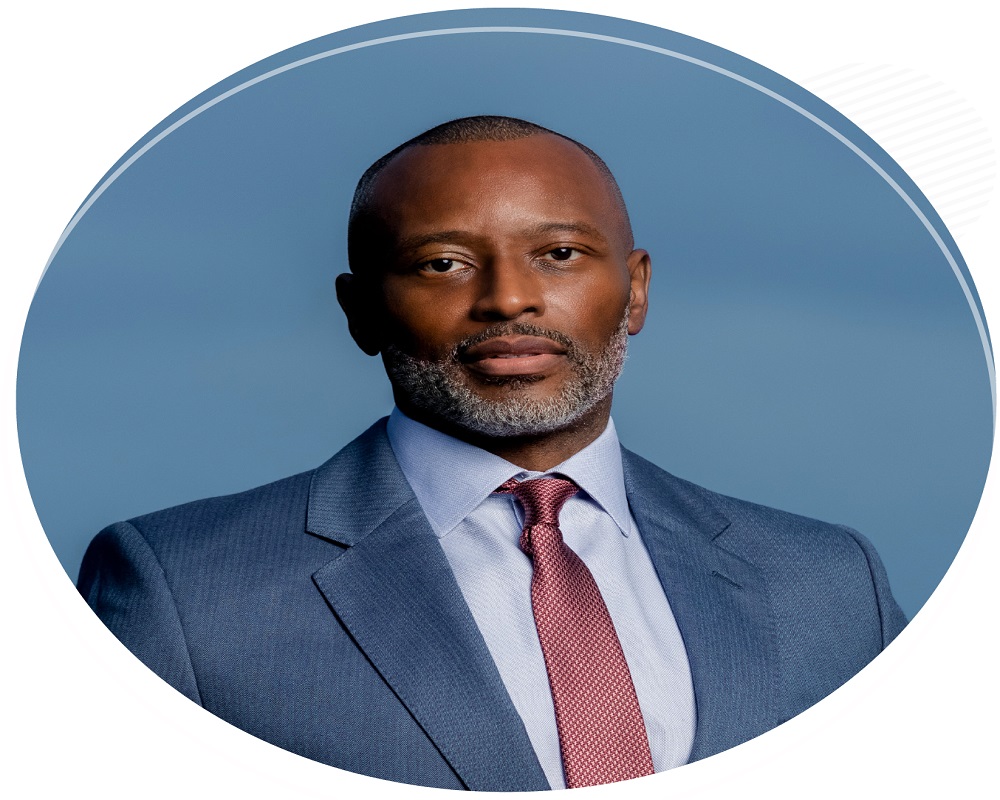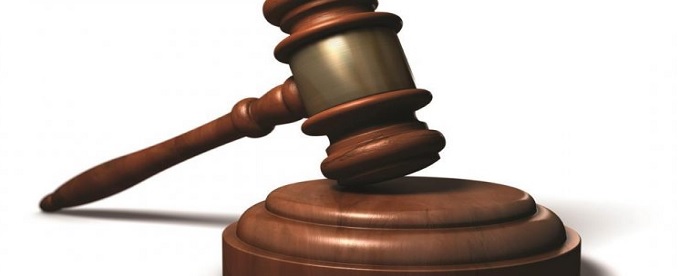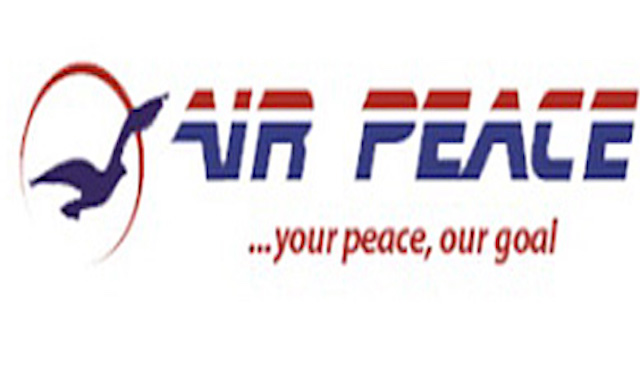General News
Technology and Operational Excellence: Enabler, Not a Panacea

By Michael Okwusogu, Founder and Managing Partner of ValueX Partners
In the case of technology and operational excellence, it could be argued that it has taken far too long. Techno-optimism is one of the greatest misconceptions when it comes to solving problems. Many of the problems that the world faces today are more complex than looking to some technological innovation to fix them. As a start, we must delineate technology and technological tools. The two are not the same especially in this context. I will explain why. Technology has been with us since the beginning of time.

The wheel is a marvel of invention and a tool of technological ingenuity that has served humankind for millennia and will continue to do so. It is a technological tool that has enabled humankind in addition to other tools, to build the world we live in today. Technology’s greatest asset is its applicability and utility depending on what we are looking to achieve. One should always choose wisely when using technology.
In my experience, within the confines of operational excellence, there are four key points that should form your decision making.
- What are your key strategic long- term goals? Usually, the objective has been to set goals for the short-term. To “put out the fires,” or meet the yearly objective, for example. Yet, this mentality usually leads the smouldering embers to flare up at a later stage. One should build for the future. Create a modular platform that enables you to use the right tech tools at the right time to meet your long-term goals and objectives – it is a methodical and disciplined approach to building operational excellence.
- Do you need a digitised environment at the initial stage? In certain cases, what is required is not digitisation, but innovation and thinking around creating an environment that will prosper in a digitised format. That means conducting a thorough rip exercise and audit. Adopt the Five Why questioning methodology if need be, or any other similar framework. I have always found this to be particularly insightful when taking on new roles or dealing with ‘business as usual’ issues. It tends to be the case that what is required, amongst other things, is training, development, organisational restructure, elimination of redundant processes, procedures and documents, a back-to-basics approach – i.e. what exactly is our core function – delivering on that, and making everyone accountable and responsible for each and every action in their respective areas and also, across the value chain which they touch.
- Mission: Who are we? What do we do? How are we supposed to do it? It is critical that the right technological tools be used to support the whole organisation for the long-term. Leadership has an instrumental role to set the vision and strategy of the organisation, engage and align all stakeholders to the future target operating model or achievement of the strategic goals and objectives. It may come across as elementary, but leadership’s role is to understand the technological and business environment over the course of each stage in the long-term. A structure must be put in place that allows teams to perform as best as they can in their respective roles and in their careers with the utilisation of the most appropriate tech tools.
- Choosing the right tech at the right time. For this to be a successful endeavour you need to align several key stakeholders. These include technology, your teams, and key stakeholders (e.g. front office/business facing) and your leadership team. Each party has a crucial role to play.
- Technology. Their key role is to give advice and support to the business. Technology should account for the current business infrastructure and the proposed infrastructure for the long-term. This will give the business an idea of available opportunities and any imminent challenges. In addition, technology should support the business in identifying suitable vendors for any infrastructure programme and be part of the selection process at contract award time.
- Teams/end users. The end users are regarded as the most important stakeholder. They must be part of the journey from the time of its inception. They must be thoroughly briefed, have accountability and ownership as to the objectives and what a successful outcome is expected to look like. Smart knowledgeable, and experienced individuals with a good work ethic and an ability to think out-of-the-box should be chosen across a wide spectrum of the organisation’s areas of responsibility (depending on the scope of the initiative), to be part of the core departmental project team.
- Leadership team. It is the leadership team’s role to set the vison and boundaries as to what is practical, achievable and within what time. Transparency and honesty are key here. A roadmap must be developed that has clear quantifiable and qualifiable goals. Usually, end users will compromise if they can see some sort of progress for a better future. All senior management, as the budget holders, should be regularly updated. These updates must be short, sharp and to the point. Furthermore, they will need to include key metrics, milestones, highlights, and lowlights in their regular reports. This builds trust and credibility within the organisation and provides transparency for external stakeholders.
These suggestions and recommendations are not prescriptive – they are my observations over the years and what has worked in many instances, and should be considered as rough and ready solutions. I have used these in many instances to achieve my goals and objectives, and I hope I have given you some insight that may prove to be of use in your respective roles.
General News
NCAA Orders Airlines to Enforce $10,000 Currency Declaration Rule

The Nigeria Civil Aviation Authority has ordered all international airlines flying into Nigeria to enforce the $10,000 currency declaration rule.

The authority said the rule is required for passengers to declare cash or negotiable instruments above the limit, as part of efforts to strengthen anti-money laundering compliance.
According to the NCAA, the directive, referenced as NCAA/CPD/ABV/298, dated 24 April 2025 seeks to address gaps in the enforcement of existing currency declaration obligations for inbound passengers.
This was announced in a statement issued by the Director of Public Affairs and Consumer Protection, Michael Achimugu, via his official X account on Tuesday.
“International carriers must take two key actions, which include “Make inflight or pre-landing announcements informing passengers of their legal obligation to declare any currency or Bearer Negotiable Instruments exceeding $10,000 USD or its equivalent upon arrival in Nigeria.
“Distribute currency declaration forms onboard for passengers to complete before landing. The NCAA has received reports indicating that some airlines are yet to comply with this directive”, the statement read.
The NCAA said these requirements are consistent with international best practices and are vital to preventing the illegal movement of large sums of money across borders.
The Authority warned that full cooperation from international airlines is essential, saying, “Please note that the cooperation of all international airlines operating in Nigeria is critical to supporting the country’s efforts to align with global financial standards.”
Accordingly, the authority emphasised that full implementation of this directive, particularly as it concerns inbound passenger declarations, is of utmost importance.
“Compliance will be closely monitored, and non-compliant airlines will face appropriate sanctions,” it added.
General News
Appeal Court Nullifies Registration of ‘KPMG Professional Services’

The court of appeal in Lagos has asked the Corporate Affairs Commission (CAC) to revoke the certificate of registration of “KPMG Professional Services”.

In a unanimous decision delivered on Thursday, the appellant court granted the reliefs sought by KPMG Nigeria against CAC and KPMG Professional Services.
The judgment was read by Abdullahi Mahmud Bayero, the judge.
The two other judges are Abimbola Obaseki-Adejumo and A.M. Talba.
In 2002, KPMG Professional Services was registered as a company with CAC despite the existence of KPMG Nigeria, comprising its audit, tax, and consulting arms.
The KPMG Nigeria has long been registered in Nigeria before 2002.
KPMG Audit was registered in 1969, KPMG Tax Consultants in 1990, and KPMG Consulting in 1969.
Displeased with the registration of KPMG Professional Services, KPMG Nigeria approached the federal high court.
The consulting firm had argued that the name “KPMG Professional Services” was deceptively similar to its long-established identity.
In 2005, the lower court dismissed KPMG Nigeria’s case, citing an alleged merger between KPMG Nigeria and Akintola Williams Deloitte as reason the company could no longer assert rights to the name.
The lower upheld the second respondent’s (KPMG Professional Services) counterclaim and ordered that KPMG Nigeria’s name be struck off the CAC register.
The lower court had premised its decision on newspaper articles stating that KPMG Nigeria reportedly merged with Akintola Williams Deloitte.
Delivering the judgment, Bayero ruled that the lower court erred by relying on newspaper articles to ascertain that KPMG Nigeria allegedly merged with another company.
The judge said the documents showing the alleged merger were not presented before the lower court, and the form of the alleged merger could not have been known.
“In any event, the only branch of KPMG, if any, that entered into a merger with Akintola Williams as stated in the newspaper articles 18, is KPMG Audit,” the judge ruled.
“The other spheres were totally unaffected. It would therefore be wrong to state that the merger (which has not been shown to this Court) of KPMG Audit with Akintola Williams means all the other areas of business, including KPMG Consulting and KPMG Tax Consultants, also ceased to exist.
“Even if the Appellants (KPMG Nigeria) had ceased to do business as the Court seemed to have held, the 2nd Respondents (KPMG Professional Services) should not have been carrying on business until the Appellant’s certificate of registration is withdrawn or set aside.
“They cannot use the name until the Appellant’s certification of registration is withdrawn or set aside. They cannot use the name until the name is removed from the 1st Respondent’s (CAC) Register of Names.
“The 1st Respondents can only assign the name to the 2nd Respondents after first taking it away from the Appellants.”
The court ruled that CAC erred by registering KPMG Professional Services despite the existence of a business name, which is already registered.
The judge reversed the earlier ruling of the lower court and reaffirmed the primacy of statutory protection for existing business names under Nigerian corporate law.
General News
Air Peace Launches Abuja–London Heathrow, Gatwick flights October 26

Air Peace has announced the launch of direct flights from Abuja to London Heathrow and Gatwick airports, with operations scheduled to begin on October 26, 2025.

The airline said in a statement on Sunday that round-trip fares for the Abuja–London service will start from N1m, making it the first Nigerian carrier to offer direct connections from the capital to both of London’s major international airports. This was contained in a press release issued on Sunday by the airline’s spokesperson, Efe Osifo-Whiskey.
“Direct international flight services from Abuja to both London Heathrow and London Gatwick Airports, effective October 26, 2025.
“Air Peace becomes the first Nigerian carrier to offer direct services from Abuja to both of London’s major international airports, further solidifying its role as a leader in regional and intercontinental aviation.
“Travellers originating from any of Air Peace’s domestic destinations across Nigeria can now book through fares via Abuja to either Heathrow or Gatwick using a single ticket, eliminating the need for multiple bookings or baggage re-checks,” the statement read.
Similarly, the new route opens convenient access for inbound passengers from the UK to cities across Nigeria.
“Travellers from London can access multiple destinations across Nigeria using a single Air Peace ticket through Abuja every morning. These destinations are Lagos, Port Harcourt, Enugu, Benin, Warri, Owerri, Kano, Yola, Gombe and Asaba, for now. Other destinations will be added later,” Osifo-Whiskey stated.
Air Peace is also offering what it describes as unprecedented value in pricing and service.
Osifo-Whiskey said, “It provides a distinct competitive advantage, enabling passengers to travel between Nigeria and the United Kingdom with greater ease, efficiency, and value, due to the possibility of choosing multiple cities entry and exit points.
“Has the cheapest fares ever, starting from only 1 Million Naira round trip. Huge baggage allowance.”
The Abuja–London launch comes months after the airline began Lagos–London Heathrow flights, which started earlier in 2024.

 E-Financial2 days ago
E-Financial2 days agoUBA’s LEO Becomes Africa’s First Chatbot to Enable Cross-Border Payments

 News2 days ago
News2 days agoUN Appoints Sa’id, Nigerian to Nuclear Panel

 E-Business2 days ago
E-Business2 days agoNIMC Enrolls 122m for NIN, Cuts Extortion by 40 Percent

 Telecom1 day ago
Telecom1 day agoMTN Nigeria Rewards 1,500+ Winners with ₦290m in Mega Billion Promo

 Telecom2 days ago
Telecom2 days agoMTN Urges Nigerian to Regards Telecom Infrastructure as National Assets

 General News2 days ago
General News2 days agoAppeal Court Nullifies Registration of ‘KPMG Professional Services’

 E-Financial1 day ago
E-Financial1 day agoNaira Slides Again, Hits ₦1,532.34/$ Despite CBN’s Dollar Push

 Telecom2 days ago
Telecom2 days agoBitget Launches $6M Global Crypto Trading Contest with New Competitive Segments














